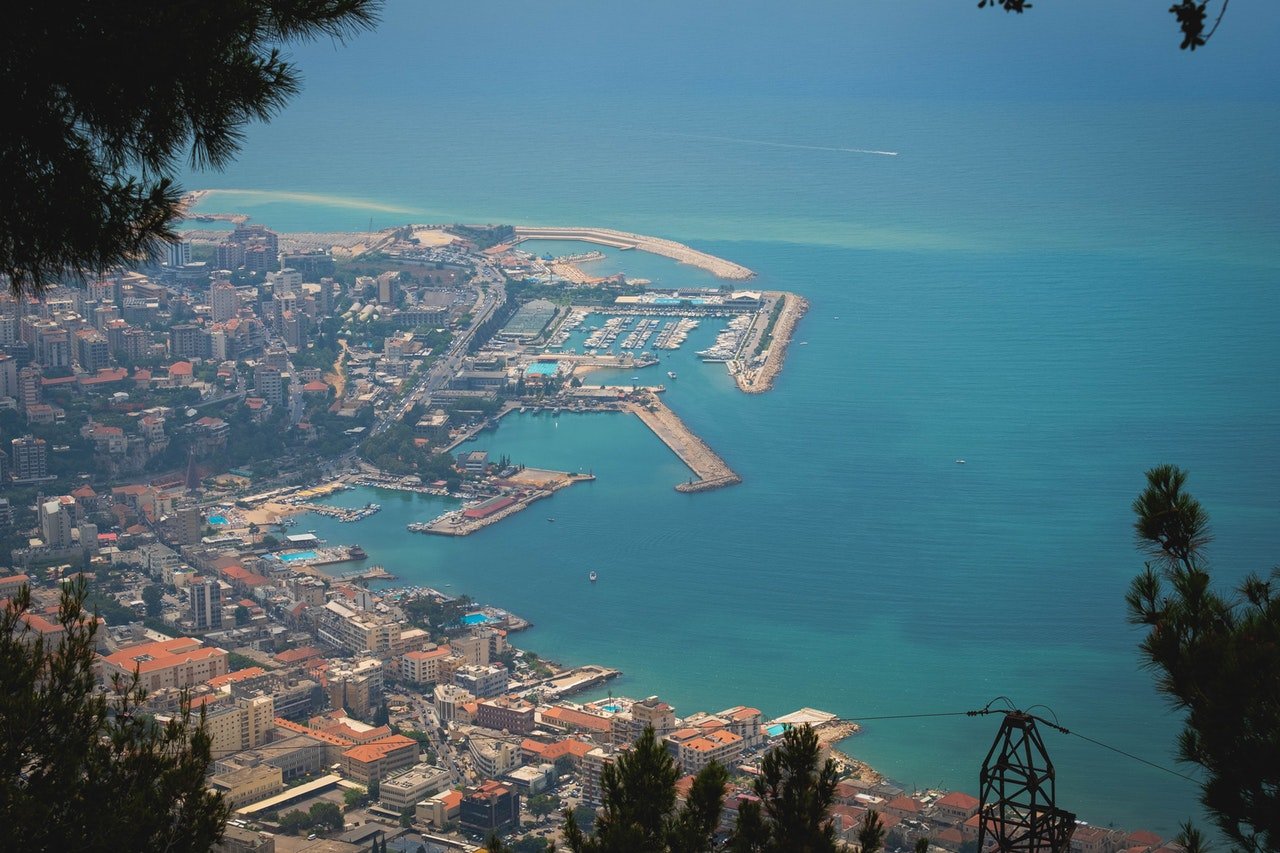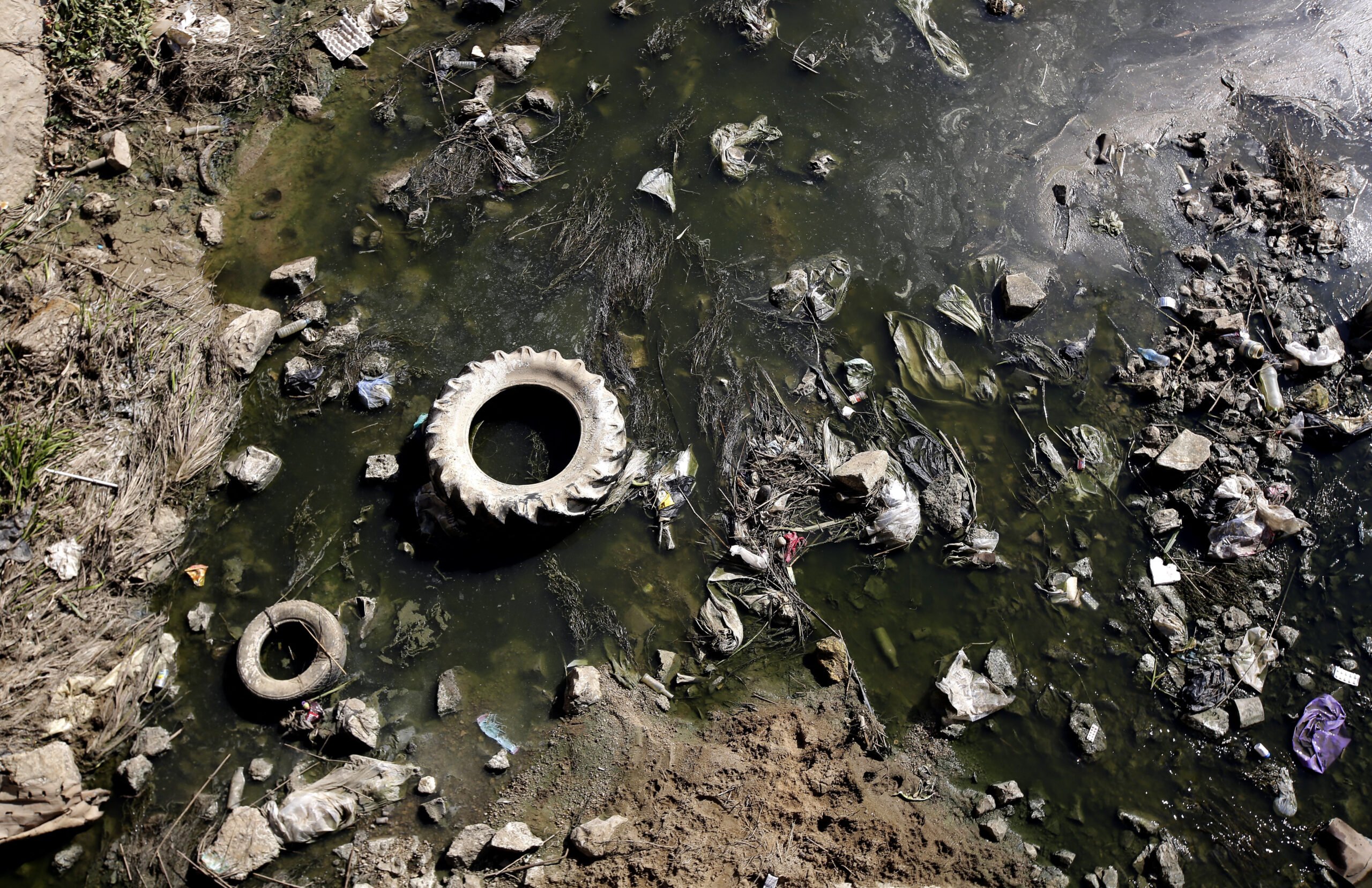
Surface water quality
Surface water quality varies widely between different rivers, between seasons and depending on the river flow. In general, river pollution levels are highest during the summer when the river flow and dilution are lowest. However, the pollution load is still high during the winter.
The main sources of pollution are domestic wastewater, solid waste and point source contamination from industrial, health care and tourist facilities and quarries. Non-point sources such as agricultural runoff are also considered a major source of pollution around agricultural areas (mainly in the Bekaa Valley).
The different pollutants lead to different types of contamination. For example, microbiological contamination has been documented in 11 rivers (Orontes, El Kabir, Bared, Arka, Abou Ali, Ibrahim, Antelias, Beirut, Damour, Awali and Litani), which is mainly due to the discharge of untreated domestic wastewater. In addition, high biochemical oxygen demand and nutrient levels have been reported in most surface water bodies. Moreover, although not well studied, heavy metals such as copper, zinc, strontium, chromium and nickel have been found in El Kabir River in North Lebanon.[1]
The Litani River is seen as a principal component in Lebanon’s socio-economic development. This is attributed to its geographic location, its extent from the interior to the coastal region and the diverse topographic surfaces it crosses. Despite this significance, the river suffers from high levels of pollution. The Qaraoun Dam, the biggest dam in Lebanon, is located on the river and divides it into two parts. The Upper Litani Basin is estimated to receive around 45.5 MCM of domestic wastewater and 3.7 MCM of industrial wastewater, which is discharged untreated into the river. Moreover, since the river runs through the middle of the Bekaa Valley, a major agricultural area, pollution resulting from extensive application of pesticides and herbicides (up to twice the recommended values) and fertilizers (three times more than recommended) is widely reported in the river.[2]
The coastal zone is also widely impacted by pollution and the discharge of untreated wastewater and solid waste. It is estimated that around 65% of the total domestic wastewater generated is discharged into the sea through 53 outflow points along the coast.
Groundwater quality
Groundwater quality in Lebanon has been deteriorating because of overabstraction and anthropogenic pollution. Over abstraction in coastal areas is leading to seawater intrusion, which is affecting the main groundwater aquifers.[2]
In agricultural areas, nitrate pollution is recognized as a major threat to the groundwater resources. This is mainly reported in the Bekaa Valley.
Moreover, the karstic nature of the groundwater aquifers puts them at a higher risk of bacterial pollution, which is partly linked to the lower soil filtration rates. Out of 31 sampled points along the coast, 17 had higher-than-average levels of faecal coliforms.[2]
Sanitation and wastewater treatment network
According to the NWSS 2010, Lebanon produced around 310 MCM of wastewater, of which 250 MCM were domestic and 60 MCM were industrial.[2] Of the total generated wastewater, it was estimated that only 8% was treated, although around 60% of the population was connected to a sewage collection network,[2] with the majority of these networks discharging untreated wastewater into rivers and coastal areas. It is estimated that more than 53 wastewater outfalls exist along the coastline.[1] Regions that are not covered by wastewater networks mainly depend on septic tanks and cesspits that pose a high pollution risk to groundwater due to seepage. A major reason for the low rate of wastewater treatment is the lack of connectivity between the existing sewage networks and the operational treatment plants.[2] It is estimated that out of the households connected to the wastewater network, less than 30% actually reach any of the operational treatment plants.[3] In addition, factors such as a lack of electricity, trained personal and financial capacity to operate these facilities also contribute to the problem. Based on this, the discharge of untreated domestic and industrial wastewater is widespread across Lebanon and is considered a major source of water quality degradation for the coastal, surface water and groundwater resources.
Environmental and health risks
The low water quality in most of Lebanon’s water resources poses major risks to the environment and public health. These risks are already evident, with instances of waterborne diseases including dysentery, hepatitis A, leishmaniosis and typhoid, which mainly affect children.[4]
Moreover, fishing has been banned from Lake Qaraoun, a reservoir on the Litani River, since 2018. In 2021, around 40 tonnes of dead fish washed up on the shore of the lake – not for the first time. The catastrophe was attributed to severe pollution from domestic, industrial and toxic waste discharged into the river, which accumulates in the reservoir. Hyper-eutrophication, low phytoplankton biodiversity and regular blooms of toxic cyanobacteria have been reported in the reservoir.[2] In addition, total coliform concentration often exceeds 5,000 col/100 ml and the nutrient percentage is eight times over the international guidelines.[5]

[1] MoEW (Ministry of Energy and Water), 2010. National Water Sector Strategy.
[2] MoE (Ministry of Environment), 2020. Lebanon State of the Environment and Future Outlook: Turning the Crises into Opportunities (SoER 2020). With UNHCR, UNICEF and UNDP.
[3] Government of Lebanon and United Nations, 2019. Lebanon Crisis Response Plan 2017-2020 (2019 update).
[4] UNICEF Lebanon, n.d. Water, Sanitation and Hygiene Program.
[5] Shaban, A and Nassif, N, 2007. ‘Pollution in Qaraaoun lake, Central Lebanon.’ Journal of Environmental Hydrology 15: 1-14.
[6] Reuters, 2021. ‘Tonnes of dead fish wash up on shore of polluted Lebanese lake.’ Published 30 April 2021.
